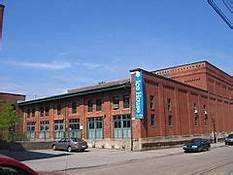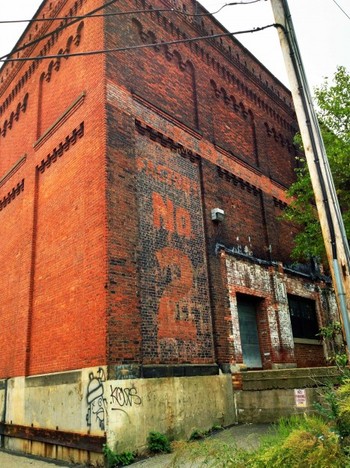Consolidated Ice Company Factory No. 2
Introduction
Text-to-speech Audio
Images
Consolidated Ice Company Factory No. 2 (Front View)

Consolidated Ice Company Factory No. 2 (The Back View)

Backstory and Context
Text-to-speech Audio
Before the invention of mechanical refrigeration, the only ways to preserve foods were either drying or salting them, which ultimately affected the diet of people because of certain factors, such as having a few food options that can be stored for long periods of time. This lead people to purchase large quantities of perishable foods, such as meat as close to the time of preparation as possible, which created the custom for people to shop daily for food. Daily food shopping boosted the development and construction of grocery stores and butcher shops within residential neighborhoods in the United States.
To better preserve foods, some individuals would harvest natural ice from lakes and rivers by cutting the ice into blocks and storing them in ice houses to use for later. This was a time-consuming process, and only the rich could afford the ice houses. However, after the Civil War, the natural ice industry in the United States became mechanized and boomed when trains would transport ice blocks to other states with limited access to natural ice. The ice would either be delivered to households or would be dropped off to ice supply stations. However, due to the business being dependent on the weather, there was a high demand for artificial ice being produced and sold to people, and soon, in the late-1880s to early-1900s, ice machines, dispensaries, and ice factories were built. By the 1920s, over 4,8000 ice factories in the U.S. were established, and over 56 million tons of ice were sold nationwide. With the artificial ice industry booming, other business ventures thrived on the success of the ice factories, such as ice cream, beer, and perishable foods like meats and vegetables.
As for Pittsburgh, the ice factories started appearing in 1890, and some of those factories belonged to the Hygeia Ice Company, the Union Ice Manufacturing Company, and the Chautauqua Lake Ice Company. However, the ice companies began to consolidate their factories together. For example, the Chautauqua Lake Ice Company merged with the Eureaka Ice company in 1897. One of the biggest consolidations of the ice industries occurred in 1899 when the Consolidated Ice Company was created. The company merged six firms together: the Chautauqua-Eureaka Lake Ice Company, the Arctic Ice Company, the Conneaut Ice Company, the Crystal Company, the Diamond Ice Company, and the P. Hermes Ice Factory. By merging these companies together, the Consolidated Ice Company took control of the other companies' assets, such as their equipment and ice wagons.
In 1900, the Consolidated Ice Company demolished and renovated the warehouse of the Hygeia Ice Company on 13th Street and made the property its first factory warehouse. In 1907, two major events occurred that helped boost moral and productivity within the company. First, a water purification system was built connecting the factory to the Allegheny River. Second, the construction of the Consolidated Ice Company Factory No. 2 on 43rd Street was completed. The "Factory No. 2" within the name comes from an insurance map from the 1920s and confirms the temporal primary of the factory at the main warehouse on 13th Street. The Consolidated Ice Company Factory No. 2 would produce over 200 tons of ice daily, making it the city's largest ice manufacturer during the early-twentieth century. Its contributions helped both Pittsburgh's economy and redefine domestic life. However, later in the mid-twentieth century, household refrigeration appliances became a popular device for people to conveniently make their own ice at home. In 1951, the factory shut down due to the lack of sales in manufacturing ice. However, the building still stands as a reminder of one of the lasting symbols of the Pittsburgh ice industry. In 2000, the Consolidated Ice Company Factory No. 2 was listed on the National Register of Historic Places.
Sources
Glass, Brent. Consolidated Ice Company Factory No. 2 Form, National Park Services. October 3rd 2000. Accessed October 29th 2019. http://www.dot7.state.pa.us/CRGIS_Attachments/SiteResource/H112231_01H.pdf.
Parker, Henry. Understanding Commercial Ice Makers. Troy, Michigan. Business News Publishing Co., 1988.
Woolrich, Willis. The Men Who Created: History of Refrigeration. New York. Exposition Press, 1970.
https://en.wikipedia.org/wiki/Consolidated_Ice_Company_Factory_No._2
https://weburbanist.com/wp-content/uploads/2016/03/abandoned-ice-factory-2a-468x626.jpg
